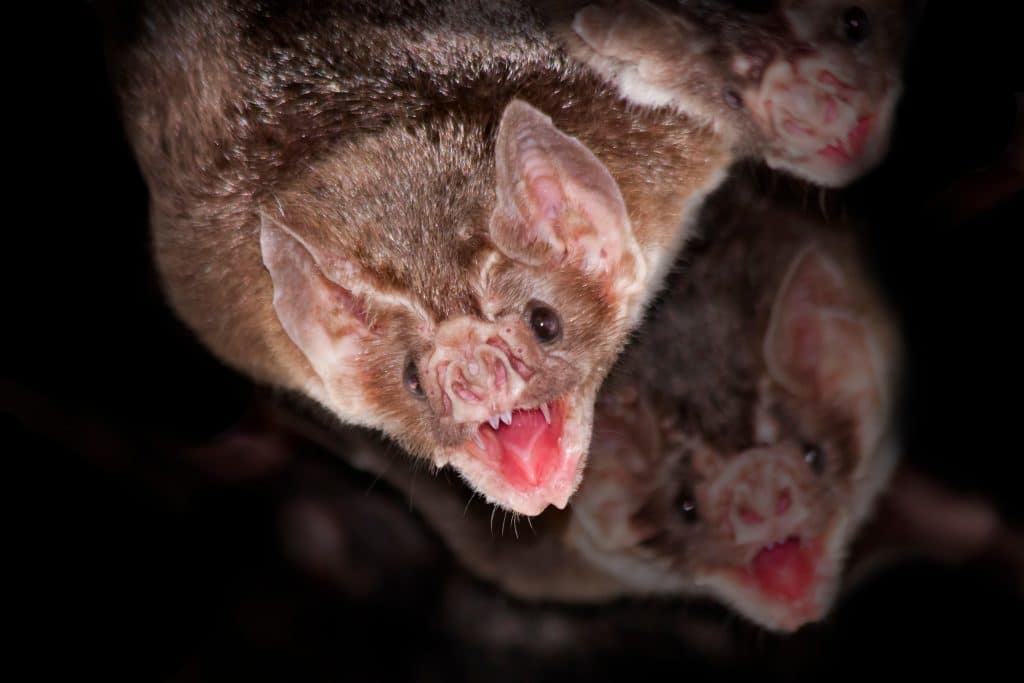Halloween and horror movies are filled with creatures designed to strike fear in the hearts of viewers—from those that drink blood in the night to insects that grow too large and develop a taste for human flesh and aliens that cross the universe intent on the destruction of humanity. But is there any truth behind any of these fantastical creatures? Turns out, the answer is yes, though the real deal is much more nuanced—and much more intriguing—than their Hollywood doppelgangers.

Vampires may not be real, but there are plenty of creatures that would drink your blood if given the chance. Vampire bats, however, hold a unique place in our imagination despite presenting little risk to humans—far less than disease-carrying mosquitoes and ticks (and far less scary of a prospect than bedbugs, if I’m honest). The only blood-drinking mammal, vampire bats live in Central and South America (not Arizona) and it’s rare that they drink human blood.
Faith Walker, a research professor and director of genetics of the Bat Ecology & Genetics Lab and the Ancient DNA Lab in the School of Forestry, said vampire bats were likely the first blood donors. They can also live a long time and a carry a grudge—more on that later.
Females of Desmodus rotundus, one of three vampire bat species, form daytime roosting groups of between 20 and 100 individuals. When a bat comes home hungry, as do about one-tenth of adults and one-third of juveniles, a roostmate will kindly provide a meal of regurgitated blood. Youngsters, who without food perish in a few days, are particularly prone to hunting failure because they lack the considerable skill required to painlessly extract blood. When hunting, a bat follows its heat-sensing noseleaf to prey—primarily cattle—where it lands and crawls hoofward. The bat licks and cuts the bite site, a process that takes 20 minutes, then must remain unnoticed for the time needed to drink half its body weight in blood. This clandestine act is aided by a salivary anti-coagulant dripping down the tongue’s top into the wound, which keeps blood flowing, and by grooves on the tongue’s underside that serve as drinking straws. (That anti-coagulant is called—what else?—Draculin.)
Females of this South American species have a high survival rate and can live to be 18 years old, which results in individuals spending a long time together. Their system of reciprocal food sharing works because they can recognize each other. This ability is facilitated by social grooming: prior to donating or receiving blood, a pair vigorously grooms one another, revealing their identities by distinctive vocalizations. During grooming, a hungry bat pats the swollen belly of a roostmate, prompting a lengthy regurgitation. Later, after a successful hunt, the recipient is more prone to donate and prefers to feed the bat that recently gave blood. Females that attempt to cheat the system by receiving but not donating are remembered and refused when hungry. This is one of the few species in which reciprocity exists between both related and unrelated individuals, a characteristic that may have evolved during the ecological bottleneck created by the disappearance of their main prey—the large herding mammals—at the end of the Pleistocene Era.


